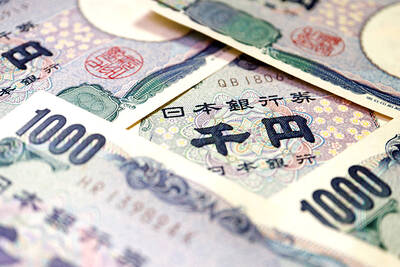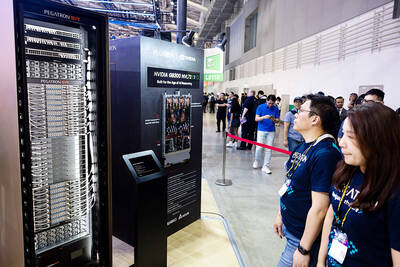The Investment Commission approved Taiwan’s outward investment of US$850 million in Vietnam in the first 11 months of last year, accounting for nearly 40 percent of all outward investment in ASEAN, with 54.1 percent of the investment in the manufacturing sector, the Ministry of Economic Affairs said on Monday.
Taiwan’s investment in the electronic components, computer, electronics and optical product manufacturing industries accounted for 22.1 percent of the total investment in Vietnam, compared with only 3.3 percent in all of 2018, as the US-China trade dispute forced companies in high-tech industries to reorganize their supply chains to avoid hefty US tariffs on products made in China, the ministry said.
Taiwan’s major investments in Vietnam over the past few years have been in the traditional textile, base metal and chemical industries, but Vietnam’s fast-growing domestic market spurred Taiwanese firms to increase investment in the solar power and real-estate sectors by 31.8 percent during the first 11 months of last year, compared with the whole of 2018.
Vietnam has become one of the most popular destinations for Taiwanese investors, as it is one of the countries covered by the New Southbound Policy, which aims to promote exchanges with ASEAN, member countries, as well as Australia, Bangladesh, Bhutan, India, Nepal, Pakistan, Sri Lanka and New Australia, to reduce the country’s economic reliance on China.
As a member of the Comprehensive and Progressive Agreement for Trans-Pacific Partnership and the Regional Comprehensive Economic Partnership, Vietnam has seen an increase in foreign direct investment (FDI) in the past few years.
For the first 11 months of last year, FDI from Taiwan to Vietnam totaled US$1.53 billion, accounting for 4.8 percent of its total FDI, up 1.8 percentage points from all of 2018, Vietnamese Foreign Investment Agency statistics showed.
Taiwan was the fifth-largest foreign investor in Vietnam, the statistics showed.
Vietnam attracted US$31.8 billion in FDI in the first 11 months of last year, up 3 percent year-on-year, the agency said.
Among the 117 countries and territories investing in Vietnam, Hong Kong and China were the largest with US$10.26 billion, making up 32.3 percent of the total during the 11-month period, followed by South Korea with US$5.73 billion (18 percent) and Singapore with US$4.47 billion (14 percent).
Taiwan’s exports to Vietnam during the 11-month period totaled US$9.85 billion, up 0.3 percent year-on-year.
With the signing of a new bilateral investment agreement last month, Taiwan’s investment in the Southeast Asian country is expected to increase more, the ministry said.

AI TALENT: No financial details were released about the deal, in which top Groq executives, including its CEO, would join Nvidia to help advance the technology Nvidia Corp has agreed to a licensing deal with artificial intelligence (AI) start-up Groq, furthering its investments in companies connected to the AI boom and gaining the right to add a new type of technology to its products. The world’s largest publicly traded company has paid for the right to use Groq’s technology and is to integrate its chip design into future products. Some of the start-up’s executives are leaving to join Nvidia to help with that effort, the companies said. Groq would continue as an independent company with a new chief executive, it said on Wednesday in a post on its Web

RESPONSE: The Japanese Ministry of Finance might have to intervene in the currency markets should the yen keep weakening toward the 160 level against the US dollar Japan’s chief currency official yesterday sent a warning on recent foreign exchange moves, after the yen weakened against the US dollar following Friday last week’s Bank of Japan (BOJ) decision. “We’re seeing one-directional, sudden moves especially after last week’s monetary policy meeting, so I’m deeply concerned,” Japanese Vice Finance Minister for International Affairs Atsushi Mimura told reporters. “We’d like to take appropriate responses against excessive moves.” The central bank on Friday raised its benchmark interest rate to the highest in 30 years, but Bank of Japan Governor Kazuo Ueda chose to keep his options open rather than bolster the yen,

Even as the US is embarked on a bitter rivalry with China over the deployment of artificial intelligence (AI), Chinese technology is quietly making inroads into the US market. Despite considerable geopolitical tensions, Chinese open-source AI models are winning over a growing number of programmers and companies in the US. These are different from the closed generative AI models that have become household names — ChatGPT-maker OpenAI or Google’s Gemini — whose inner workings are fiercely protected. In contrast, “open” models offered by many Chinese rivals, from Alibaba (阿里巴巴) to DeepSeek (深度求索), allow programmers to customize parts of the software to suit their

Global server shipments are expected to surge to 15 million units next year, from 4 million units this year, with artificial intelligence (AI) servers accounting for about 30 percent, driven by massive capital spending by major cloud service providers, the Market Intelligence and Consulting Institute (MIC) said on Thursday last week. Major cloud service providers — including Google’s parent company Alphabet Inc, Microsoft Corp, Amazon.com Inc and Meta Platforms Inc — are projected to budget US$450 million for capital expenditure next year, up from US$400 million this year, MIC ICT [information and communications technology] Industry Research Center director Edward Lin